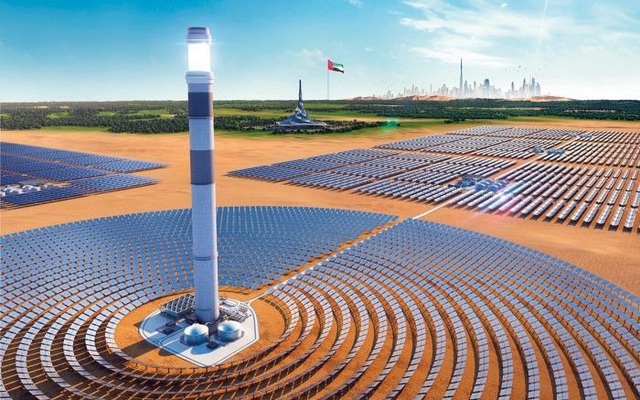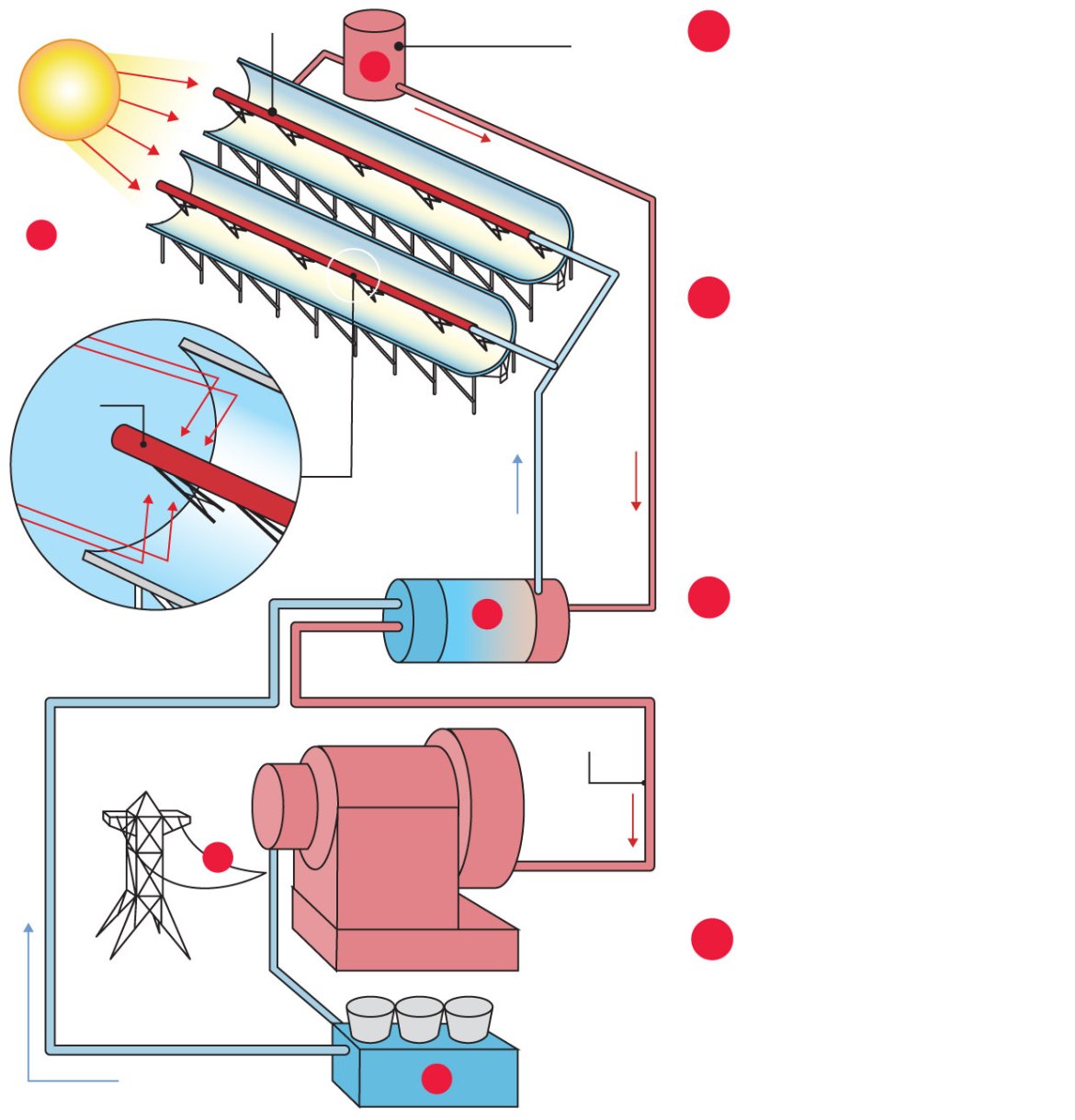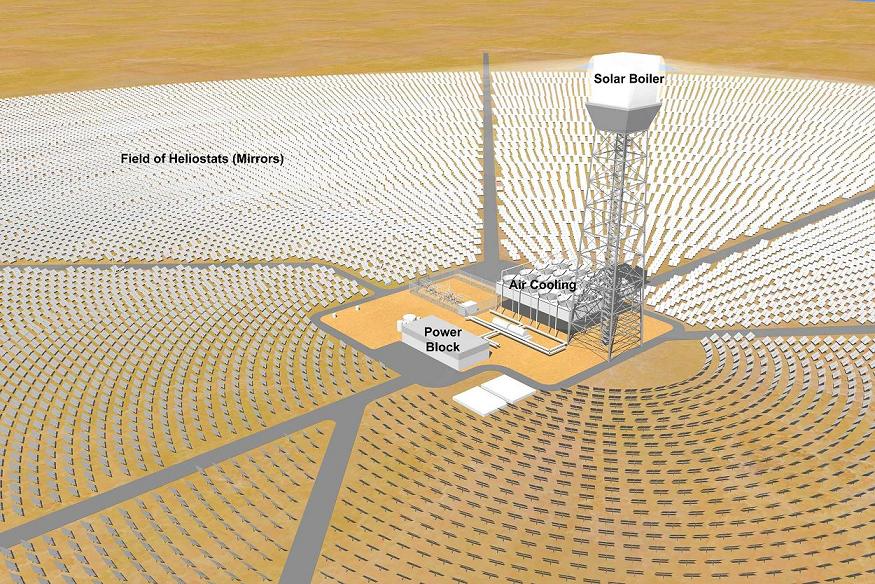A method that has been “abandoned” for a long time suddenly became interested when the world struggled to “detox” carbon.
When it comes to solar energy, people will probably think of photovoltaic panels that capture light and convert it into electricity. But there are still other ways to harness the power of the sun. Currently, one way that is gaining more and more interest is concentrated solar power (CSP), which is a method that uses mirrors to reflect and focus solar energy.
Previously, CSP was held back due to underdeveloped technology and lack of funding, along with the government’s “favorite” of other renewable energy sources. However, as the world became aware of the need to replace fossil fuels and promote zero-carbon energy, a number of organizations were funded to research and improve the technology.

Many consider the heat generated by CSP systems, and their storage capacity, to be a major advantage over other types of renewable energy. They can generate electricity grids and fuel various industrial processes.
Instead of converting sunlight directly into electricity like photovoltaic panels, CSPs use “heliostats” to focus sunlight. From there, heat the material to extremely high temperatures, generating heat.
How it works
Concentrated solar energy does not need photovoltaic panels, but uses mirrors to focus the sun’s rays and capture heat to generate electricity. They do this by using a series of concave or parabolic mirrors to focus sunlight onto a small area.
This magnifies sunlight and creates a region of extreme heat, which is used to heat a liquid medium (molten oil or salt). The heat from the extremely hot liquid creates steam, drives turbines, and produces electricity. This capacity can be up to 250 megawatts or more, enough to operate 90,000 homes.

The steam is then cooled and condensed, and the water is stored and reused. The heated liquid can also be stored and used later to generate electricity on demand, such as when the sun is not shining. Since CSP uses thermal energy, it has more in common with fossil fuel plants than with solar farms.
Hot storage
Most CSP systems can store enough heat to generate power for 6 to 12 hours on demand for later use. Meanwhile, the photovoltaic system is only 3 or 4 hours for energy storage lithium batteries.
CSPs can also be used in many industrial processes that require high temperatures, such as steel, concrete and chemical manufacturing. Using heat from a CSP in this way is more efficient than taking electricity from solar panels and converting it to heat, and cleaner than burning fossil fuels to generate heat.
According to Zhu Guangdong, senior researcher in the Geothermal and Solar Technology Focus program at the federally funded National Renewable Energy Laboratory, companies see CSP as a way to reduce energy costs. emissions. This can have a significant impact on the environment. “Industrial heat accounts for 20% or 25% of total energy consumption,” said Dr. Chu.
Dr. Chu said CSP will not eventually replace photovoltaic solar power but will instead supplement. “If we want to decarbonize the grid with 100% renewable energy, then we need to use it all,” he said.
There is still a long way to go
Currently, CSP’s contribution to the global energy supply is very small. There are about 6 gigawatts of CSP capacity worldwide, with more than 2 gigawatts in the US, according to Benjamin Attia, a research analyst in energy conversion at energy research and consulting firm Wood Mackenzie. Meanwhile, the capacity of photovoltaic solar has recently exceeded one terawatt, or 1,000 gigawatts.
Technical difficulties are partly to blame for that disparity. The process of converting thermal energy into electricity is much more expensive and less efficient than photovoltaics. In addition, CSP systems require a lot of water, which is a problem because the places that can get maximum exposure to sunlight are often deserts or locations where water is scarce.

Mr. Attia revealed that the new technology holds promise for reducing costs and making CSPs more efficient, but has yet to break through. “We haven’t really seen any next-generation CSP technology in the field yet.”
A new influx of investment and research could start to change that. Research initiatives include HelioCon, a consortium of government and corporate organizations, researchers and CSP experts. The consortium was founded in December by the National Renewable Energy Laboratory and the Department of Energy to develop cheaper and more efficient heliostats.
At the same time, scientists at the University of Barcelona are also working on a material that can be heated to higher temperatures, making it more efficient in generating electricity. Ana Ines Fernandez, professor in the Department of Materials Science and Physical Chemistry at the University of Barcelona, says it is essential to find a material that is not rare, expensive or toxic.
This could help CSP avoid the problem that lithium batteries have of relying on rare earth metals that require multiple conditions and generate serious labor issues around sourcing. “We wanted to find solutions that were not only the cheapest, but also the most sustainable,” says Dr. Fernandez.
New project
Several projects are exploring other uses for CSPs, beyond power generation. Synhelion SA, a spin-off from the Swiss Institute of Technology, plans to use CSP to produce carbon-neutral kerosene as jet fuel.
Carbon neutral kerosene is made by splitting water into hydrogen and oxygen, and then combining hydrogen with carbon dioxide. Philipp Furler, chief executive officer and founder of the company, said Synhelion plans to use heat from the CSP for the energy needed to produce the fuel and aims to produce 700,000 tonnes of carbon-neutral kerosene per year. by 2030. This equates to about half of Switzerland’s jet fuel consumption.
CSP has advantages for this process. It is more efficient than using electricity to generate heat. In addition, to generate the same amount of energy, a CSP system requires less land than a photovoltaic system. The CSP’s storage capacity can also provide uninterruptible power.
at Blogtuan.info – Source: genk.vn – Read the original article here

